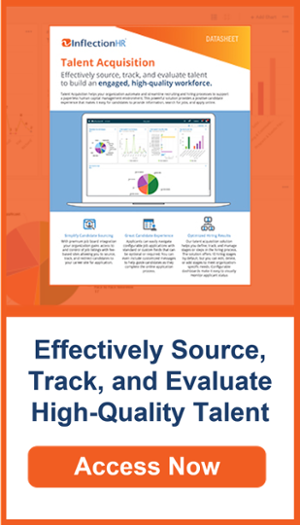If you're considering letting your employees work remotely, you're not alone. As an industry trend, the remote workforce is proving increasingly valuable, in addition to being a top priority that most of today's candidates look for in a job position.
Once you've figured out how to successfully hire remote workers and you've asked them the appropriate questions to ask a remote employee before hiring them, employers need to ensure the potential remote hire is a great fit for their organization. While typically employers have a feel for this after an interview, it is impossible to know for sure until you get to the onboarding stage. That is why pre-hire onboarding is a crucial step in the entire employee onboarding process.
Cloud-Based Onboarding for Remote Employees
However, the hiring and onboarding process for remote workers is different from those used for in-house employees. Employers typically find more success if you're aware of and follow some emerging best practices.
Good Onboarding Starts in the Prehire Stage
The optimal procedure is to get the new hire into the office for orientation before sending them out to work remotely. It can help people put names to faces and create an overall sense of assurance within the new hire. Sometimes with remote employees, however, bringing them into the office is not an option due to location. In that case, employers need to have a different process that gets the new hire comfortable with their new work situation despite the distant location.
Create an Onboarding Procedure to Fit the New Hire's Remote Situation Using Cloud-Based Onboarding
When onboarding a remote employee, sometimes you can not use paper forms, information, and handbooks. That is why a cloud-based employee onboarding solution is so important in order to successfully onboard new hires in a timely fashion. Have them return their documents to you for review before you schedule their orientation discussion.
Use Cloud-Based Employee Onboarding to Plan a Virtual Walkthrough
If there's no way for them to get to the office, technology offers the capacity to take the office to them. Several apps provide video conferencing so you can show them where their new company is situated and introduce them - face-to-virtual-face - to their new colleagues. They'll be able to visualize who they're talking to and where that person is located in every future conversation.
Conduct the Remote Hire Orientation Through a Video Feed
It builds camaraderie and trust, so they'll be more relaxed if they have questions for you about the new work and company. It also provides a better foundation for a discussion about the culture of your company and its expectations of its effort going forward.
Use Cloud-Based Onboarding to Engage With Remote Hires on an Ongoing Basis
Once they have settled into the new job, it is critical that they remain connected to your business as they move forward with their work:
Most remote workers benefit when there are frequent interactions between them and their business colleagues. Some may prefer to check in every day, while others are comfortable with a once-a-week or bi-weekly conference call. Again, technology provides numerous options for communications, including video chats, email, and texts. Clarify the exact channels you will use to connect with them and expect them to respond through those channels when you reach out.
Technology can also provide you with tools to 'oversee' what they're doing from a distance. A cloud-based timekeeping software lets employees "clock in and out" of the company as they "get to" and "leave from" work each day. Uploading their work product into the company's cloud storage facilities puts that data into corporate databanks where you can see what they're doing and use their remotely-generated data to drive your 'in-the-office' decisions.
Final Thoughts on HR Cloud Onboarding
For companies struggling with the onboarding process, a modern, cloud-based HR onboarding solution can be of tremendous help. Whether your new hire is remote or on-premises, our talent acquisition solution can get the job done. To see how Inflection HR is already helping countless businesses with onboarding new hires, contact us today.



